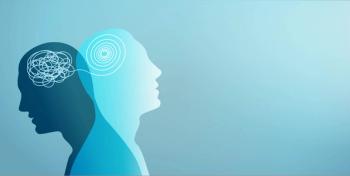
New Data on tDCS for Bipolar Depression
Transcranial direct current stimulation delivery systems differ from one another in design, action, and results. One has been shown to be significantly better than sham treatment for bipolar depression. What does this mean for clinical practice?
Transcranial direct current stimulation (tDCS) delivery systems differ from one another in design, action, and results. One of them has recently been shown to be significantly better than sham treatment for bipolar depression. But don’t go buy it yet. This approach may help in the short run, but its value as a maintenance treatment has yet to be established.
Bipolar depression is often difficult to manage. Any new treatment option is worth examining-especially if it does not have the antidepressant- associated risk of inducing mixed states and rapid cycling, with their associated increased
In that context, let’s have another look at tDCS for bipolar depression. In late 2015, I reviewed a study that used the Fisher-Wallace device study, concluding results were
Advances in non-Pharma treatments for bipolar depression (eg,
Reminder: what is tDCS?
Several devices are available that pass a low-energy electrical current through brain tissue from one side of the brain to another, thus the term tDCS. For an overview, see a Psychiatric Times
New study results
An international team lead by Bernardo Sampaio-Junior3
What does this mean for practice?
First, all tDCS systems are not created equal. Deliberate electrode placement appears to be important, even though this requires more direct clinician involvement than the devices being marketed direct to consumers (eg, Fisher-Wallace and Alpha-Stim). For example, in the treatment of multiple sclerosis, left DLPFC tDCS worked for fatigue and right parietal tDCS improved mood-but
Yet this approach has potential. The tDCS device used in the Brazilian study is being studied for
Interestingly, such ease of use approximates that of a tool we already have: bright light therapy, which was recently demonstrated to be superior to control treatment for bipolar depression, but with a twist: midday, not morning, light. This important study was
Awaiting further data (eg, a longer term study of tDCS to assess maintenance benefits): if one were considering buying a TMS device, this new tDCS study-with potential for at-home treatment, like light therapy-might give pause.
Disclosures:
Dr. Phelps is Director of the Mood Disorders Program at Samaritan Mental Health in Corvallis, Ore. He is the Bipolar Disorder Section Editor for Psychiatric Times. Dr. Phelps stopped accepting honoraria from pharmaceutical companies in 2008 but receives honoraria from McGraw-Hill and W.W. Norton & Co. for his books on bipolar disorders, including
References:
1. Undurraga J, Baldessarini RJ, Valenti M, et al. Suicidal risk factors in bipolar I and II disorder patients. J Clin Psychiatry. 2012;73:778-782.
2. Phelps J. Cranial Electrotherapy Stimulation for Bipolar Depression: New Data. Psychiatric Times. December 28, 2015.
3. Sampaio-Junior B, Tortella G, Borrione L, et al. Efficacy and Safety of Transcranial Direct Current Stimulation as an Add-on Treatment for Bipolar Depression: A Randomized Clinical Trial. JAMA Psychiatry. 2018;75:158-166.
4. Rapinesi C, Bersani FS, Kotzalidis GD, et al. Maintenance Deep Transcranial Magnetic Stimulation Sessions are Associated with Reduced Depressive Relapses in Patients with Unipolar or Bipolar Depression. Front Neurol. 2015;6:16.
5. Kelly T. The Art and Science of Thyroid Supplementation for the Treatment of Bipolar Depression. CreateSpace Independent Publishing Platform;2018.
6. Zarate CA Jr, Brutsche NE, Ibrahim L, et al. Replication of ketamine's antidepressant efficacy in bipolar depression: a randomized controlled add-on trial. Biol Psychiatry. 2012;71:939-946.
7. Chalah MA, Riachi N, Ahdab R, et al. Effects of left DLPFC versus right PPC tDCS on multiple sclerosis fatigue. J Neurol Sci. 2017;372:131-137.
8. Charvet L, Kasschau M, Datta A, et al. Remotely-supervised transcranial direct current stimulation (tDCS) for clinical trials: guidelines for technology and protocols. Front Syst Neurosci. 2015;9:26.
9. Kasschau M, Reisner J, Sherman K, et al. Transcranial Direct Current Stimulation Is Feasible for Remotely Supervised Home Delivery in Multiple Sclerosis. Neuromodulation. 2016;19:824-831.
10. Sit DK, McGowan J, Wiltrout C, et al. Adjunctive Bright Light Therapy for Bipolar Depression: A Randomized Double-Blind Placebo-Controlled Trial. Am J Psychiatry. 2018;175:131-139.
Newsletter
Receive trusted psychiatric news, expert analysis, and clinical insights — subscribe today to support your practice and your patients.














